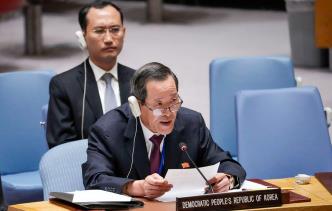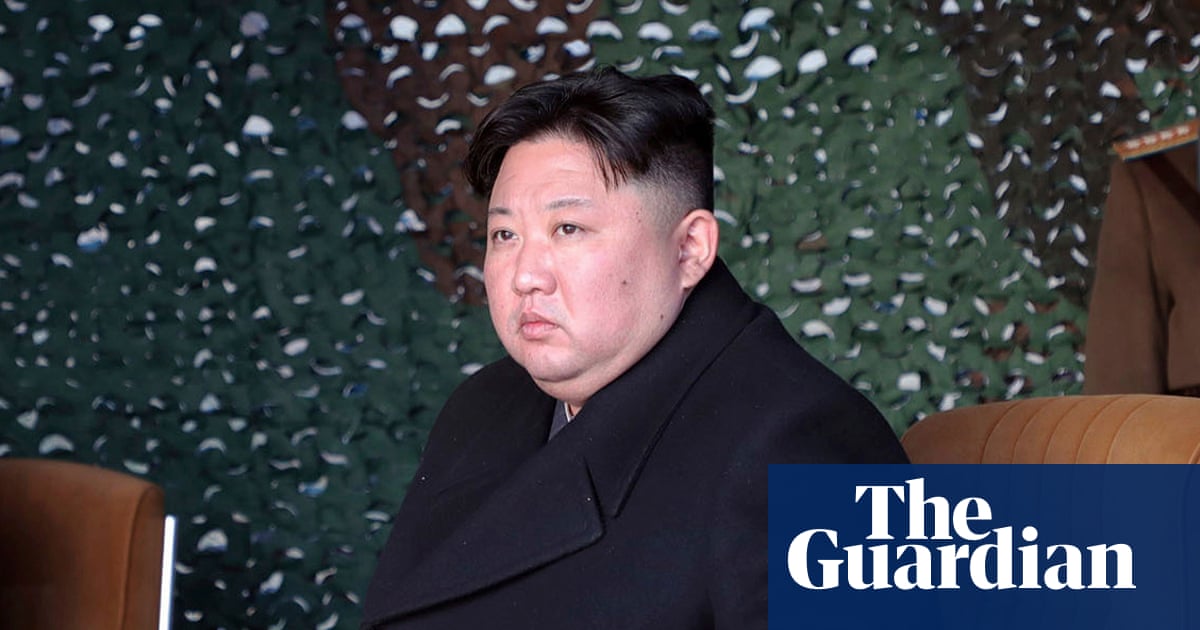
Kim Jong Un says genuine peace and security are ensured and guaranteed only by powerful strength
North Korea had hoped to get US sanctions lifted in return for phased denuclearization efforts, but Trump’s administration rejected the offer
SEOUL: North Korea’s state media announced on Sunday that its military had staged a live-fire drill of long-range multiple rocket launchers and tactical guided weapons in the presence of its leader Kim Jong Un on Saturday.
Local defense experts who analyzed photographs released by the Korea Central News Agency (KCNA) believe that the guided weapons were short-range missiles modified from Russia’s solid-fuel short-range ballistic missile, Iskander. If that is the case, then North Korea is in violation of UN resolutions that ban any type of ballistic missile launch.
“The purpose of the drill was to estimate and inspect the operating ability and accuracy of … large-caliber long-range multiple rocket launchers and tactical guided weapons by defense units in the frontline area and on the eastern front,” the KCNA reported.
Kim was quoted as saying, “The iron truth (is) that genuine peace and security are ensured and guaranteed only by powerful strength.”
South Korea remains cautious about openly identifying the guided weapons fired from the eastern coastal city of Wonsan as ballistic missiles, as it does not wish to undermine its relations with its northern neighbor, which have thawed considerably over the past 12 months.
On Saturday morning, South Korea’s joint chiefs of staff (JCS) issued a statement referring to the North Korean weapons as “short-range missiles,” but later amended their phrasing to “projectiles.”“We’re analyzing the details and specifications of projectiles fired by the North in cooperation with US counterparts,” a JCS spokesman told reporters. “The maximum range of some of the projectiles was 240 kilometers.”
Shin Jong-woo, a weapons analyst at the Korea Defense and Security Forum, said the tactical guided weapons resemble those revealed during a military parade in February last year on the occasion of the 70th anniversary of the North Korean People’s Army.
“Analyzing the KCNA photos showing the firing tactical guided weapons, the design of wings and warhead is very similar to that of Iskander,” Shin noted.
The Iskander-type missiles potentially pose a grave threat to the security of the South Korean people and to the 28,500 US troops stationed in the country, Prof. Kim Dong-yeop of the Institute of Far Eastern Studies warned.
“The Iskander is believed to have a range of 50-to-500km, and is capable of carrying different types of warheads, including nuclear warheads,” the professor said. “The solid-fuel, precision-guided missile is believed to fly at different altitudes and angles, so it could neutralize the missile shield operated by South Korea and the United States, including the (Terminal) High Altitude Area Defense (THAAD).”
The communist state’s missile launch — the first of its kind in 17 months — casts a shadow over inter-Korean relations and future nuclear talks between Pyongyang and Washington, observers said.
“The firing of a ballistic missile is in violation of UN resolutions. And the missile is a Russian item sensitive to the US military,” said Shin In-kyun, head of the Korea Defense Network, adding that he expected America to “increase pressure” on North Korea.
Yang Uk, a research fellow at the Korea Defense and Security Forum, said: “It is a message that North Korea could return to the previous confrontational situation if there is no breakthrough in the stalled denuclearization process.”
Since South Korean President Moon Jae-in and Kim agreed on measures to reduce cross-border tension in April last year, both sides have reduced their major military training exercises. As part of confidence-building measures, both militaries even destroyed frontline guard posts near the demilitarized zone while establishing buffer zones in the air and at sea.
“South Korea has given up many parts of defense readiness by limiting its surveillance and reconnaissance operations near the military demarcation line, but now it has been stabbed in the back by the North,” Yang added. “President Moon’s policy of engaging the North has just met with a difficulty.”
The two countries technically remain at war, as the 1950-53 Korean War ended with a truce, not a permanent peace treaty.
North Korea had hoped to get US sanctions lifted in return for phased denuclearization efforts, but US President Donald Trump’s administration rejected the offer, walking away from the February summit with the North in Hanoi, Vietnam.












